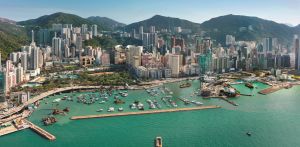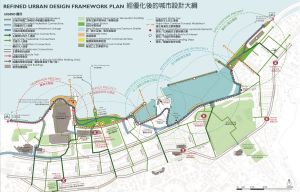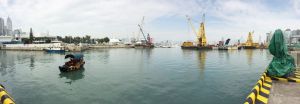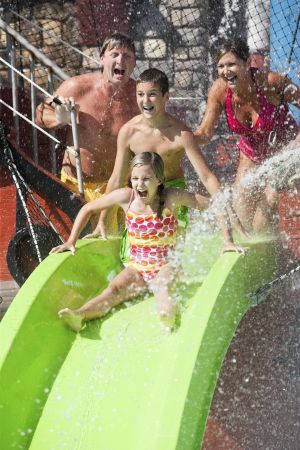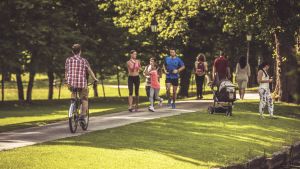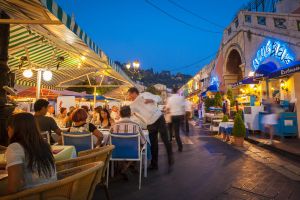Place-making – harbourfront for Hong Kong people
|
Earlier on, Canton-pop singer Leon Lai held a concert at Central Harbourfront for some nights. Despite some twists and turns, with his sincerity and undertaking, Mr Lai managed to turn the crises into opportunities. The concert was held successfully. Turned out that flocks of visitors flooded into the “inner and outer peripheries of the core” of Central Harbourfront with their friends to enjoy a good time night after night. Not only has the concert been described as "things at worst will mend", perhaps it has also become an important chapter of our collective memory. When I passed by Central Harbourfront on one of those nights and saw the public each enjoying the music and the dazzling view across Victoria Harbour, I was deeply moved. It also reminded me of the importance of place-making on the use of precious public space. To put it simply, place-making is a people-oriented process connecting people with places in order to maximise common interests. The Development Bureau and the Harbourfront Commission (HC) have always held a common vision of making Victoria Harbour a lively and interesting place, enabling the public to enjoy a high-quality public space. The 73km-long Victoria harbourfront also needs diversity, otherwise it will only be a lifeless area. For this reason, developing harbourfront into attractive places through place making has always been one of the main objectives of our work. Taken into account the unique characteristics of Central, the HC, the Central and Western District Council and the Government collaborated in 2012 to explore turning the New Central Harbourfront into a place for dog garden, small theatre, observation wheel and other activities (such as the Lai Yuen Amusement Park, carnivals, equestrian shows and arts exhibitions) before long-term development. The place has successfully attracted some five millions of visitors over the past two years. This “little experiment” has proved the benefits of place-making to public enjoyment of the harbourfront. The Planning Department (PlanD) and HC launched Stage 1 Public Engagement (PE) for the Urban Design Study for the Wan Chai North and North Point Harbourfront Areas in June 2015. It was also the continuation of the spirit of place-making from the Central Harbourfront all the way eastwards to Wan Chai North and North Point harbourfront areas. The Stage 1 Public Engagement has confirmed the project’s vision of “reconnecting people to the water”. Through collective wisdom, we wish to further refine the existing urban design framework plan and to map out a series of harbourfront enhancement proposals. Stage 2 PE will be rolled out on June 11 and we encourage the public to actively participate in it. As the proposals are very comprehensive and informative, members of the public are encouraged to visit the dedicated website (http://wcnnpuds.hk/) for more details during Stage 2 PE. I have hereby selected some of the proposals to share with you. First, the elevated landscaped deck to be constructed near the Hong Kong Academy for Performing Arts and the Hong Kong Arts Centre will be connected to the proposed “Sunset Plaza”, where visitors can admire the breathtaking sunset view at the western Victoria Harbour. As for the reclamation area near the new Wan Chai Ferry Pier, we propose constructing a harbourfront performance area for large-scale local and international events. Besides, the large-scale water fun area and gardening space would be the best places for family days out. We also hope to showcase a new concept of water-friendly and water recreation by fully utilising the water body of around two hectares of land at the former Wan Chai Public Cargo Working Area. We plan to provide a sunbathing area and a floating swimming pool, including a children's pool, water slides and a diving pool. Large-scale water sports or events like sailing, dragon boats and triathlons can also be organised in the proximity, which echoes the water-friendly culture. To promote the culture and heritage of the Causeway Bay Typhoon Shelter, we propose bringing back floating restaurants and sampan services which can take citizens and tourists to the floating restaurants, the northern breakwater and other attractions. In this traditional typhoon shelter, visitors can enjoy the special cuisine and alternative boating experience. Accessibility is very important when it comes to making a place. We recommend constructing a pedestrian boardwalk by widening the narrow footpath outside Victoria Park to a waterfront promenade, in order to provide a more comfortable and pleasant strolling experience for residents and tourists. The pedestrian boardwalk will extend from the waterfront of north of Victoria Park Road eastward to the East Coast Park in North Point. To make it easier for citizens and visitors to have direct access to the waterfront, we also planned an elevated landscaped deck at Victoria Park to connect with the pedestrian boardwalk. About the pedestrian boardwalk, I believe you may recall the public engagement exercise for “Boardwalk underneath Island Eastern Corridor” conducted earlier on. The associated proposals were also a result from the place-making. The new East Coast Park in North Point would connect to the above-mentioned two pedestrian boardwalks to create an approximately 3km-long continuous waterfront. We also propose further optimising four south-north elevated landscaped decks in Wan Chai North and North Point. It will give the public easy access to the various themed precincts along the harbourfront from old urban areas and MTR stations. We hope to bring public arts and new architectural designs to these landscaped decks to make strolling along the waterfront an enjoyable experience. Moreover, we have examined various types of transportation facilities to ensure the public have easy access to the waterfront. It is not easy to take care of everyone’s need. Therefore, PlanD and its consultant team proposed a series of new harbourfront enhancement proposals, after taking into account the public’s views received during the Stage 1 Public Engagement as well as deliberating with many experts of HC. However, place making is an interactive process. It needs the public’s active participation to inspire unique and interesting outcomes. I sincerely hope that you can participate in the Stage 2 Public Engagement to understand the design concepts, and express your views on our proposals.
|
|
29 May, 2016
Back